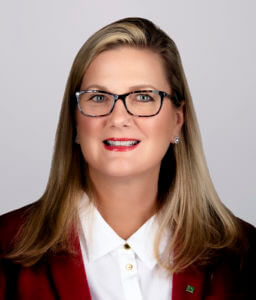
We’ve heard from so many of our HerMoney moms this year that college planning has just been a bear. And yes, COVID is certainly a factor, with some schools going back and forth on remote learning vs. hybrid learning vs. in-person learning, and we all want our kids to be safe. But the truth is, our biggest college question marks are a constant, Every. Single. Year. — We’re all wondering how to pay for it, and plan for it in a way that gives our kids the best head start on their futures, while also not compromising our own goals for life and retirement.
Today, over 43 million Americans have student debt — that’s 1 in 8 of us, and women typically borrow more than men, according to the American Association of University Women. The average debt that student borrowers carry for a bachelor’s degree hovers around $30,000, but when we take a look at secondary degree programs, like dental school, for example, that debt shoots up to $292,000 per borrower, according to the Institute of College Access and Success. But it should come as no surprise that the vast majority of us will have to borrow — according to data from the College Board, the average sticker prices for tuition and fees for full-time students in the 2020-2021 school year were $10,560 for public four-year colleges and universities for in-state students, and $37,650 per year at private non-profit institutions.
But does hearing these statistics really do anything, apart from make us worry? The truth is, we all have a unique financial situation, and where our kids decide to go to school, and what they decide to study has everything to do with the price tag of their education and their ability to pay down that debt.
These days, there are so many ways to pay for college. Some of us will use a mix of savings from a 529, plus federal loans… Some of us will use our income along a mix of federal loans and private loans…. Some of us will have the benefit of scholarships… And then of course there’s the FAFSA, the form that every student needs to fill out that will help us unlock access to so many of these opportunities. The point is that, yes, the picture is complex, but there are options for everyone. To go over all of them with us this week on the HerMoney Podcast is Christine Roberts, Head of Student Lending at Citizens Bank. Christine is a 30-year veteran of the Financial Services industry and she has helped educate countless families determine their best options for borrowing for school so that they can realize their career aspirations without breaking the bank.

Listen in as Jean and Christine discuss the federal student loan forbearance that’s set to end at the end of January 2022, and what it means for families today. Then, we dive right into the fact that today’s college prices often leave a big gap to be filled. Families are pulling from three primary sources for college money: savings you’ve already accumulated, the money you’re earning now, or borrowed funds, (which includes all forms of student loans, and sometimes home equity loans, etc.). The big question is: How do you decide where to pull the money from and when? Christine walks us through the all-important “save, spend, or borrow” equation.
Jean and Christine also talk about the term “borrow strategically,” because it doesn’t necessarily mean “borrow as little as possible” like we may think — the best strategies runs much deeper than that. We talk about a year-by-year game plan for borrowing.
We also dive into the FAFSA — the gateway to federal grants, aid, and federal loans, that’s due to get an overhaul soon. No, the form isn’t fun to fill out, but many people just don’t complete it, and then end up paying more for college than they need to. We discuss what we need to know about the FAFSA for this year.
In Mailbag, Jean and Christine tackle a question from a listener whose daughter is a sophomore in high school, and she’s wondering what she can do to save as much as she can for her child’s education while also prioritizing her own retirement.
CORRECTION: Please note that in an earlier version of the show, our guest noted that Great Lakes will stop servicing student loans. It is not Great Lakes. It is Granite State. We apologize for the error.
This podcast is proudly supported by Edelman Financial Engines. Let our modern wealth management advice raise your financial potential. Get the full story at EdelmanFinancialEngines.com. Sponsored by Edelman Financial Engines – Modern wealth planning. All advisory services offered through Financial Engines Advisors L.L.C. (FEA), a federally registered investment advisor. Results are not guaranteed. AM1969416










